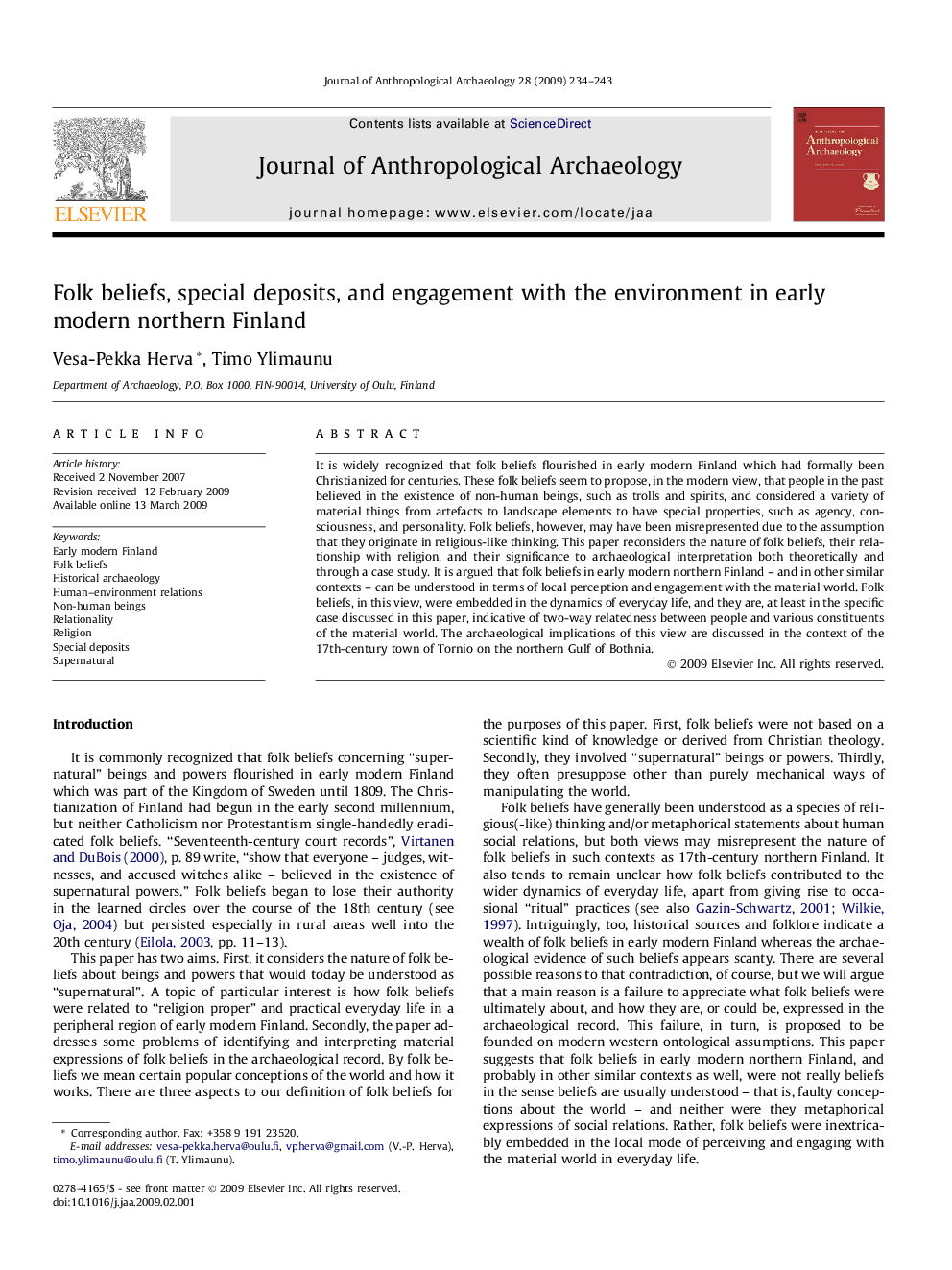| Article ID | Journal | Published Year | Pages | File Type |
|---|---|---|---|---|
| 1035174 | Journal of Anthropological Archaeology | 2009 | 10 Pages |
It is widely recognized that folk beliefs flourished in early modern Finland which had formally been Christianized for centuries. These folk beliefs seem to propose, in the modern view, that people in the past believed in the existence of non-human beings, such as trolls and spirits, and considered a variety of material things from artefacts to landscape elements to have special properties, such as agency, consciousness, and personality. Folk beliefs, however, may have been misrepresented due to the assumption that they originate in religious-like thinking. This paper reconsiders the nature of folk beliefs, their relationship with religion, and their significance to archaeological interpretation both theoretically and through a case study. It is argued that folk beliefs in early modern northern Finland – and in other similar contexts – can be understood in terms of local perception and engagement with the material world. Folk beliefs, in this view, were embedded in the dynamics of everyday life, and they are, at least in the specific case discussed in this paper, indicative of two-way relatedness between people and various constituents of the material world. The archaeological implications of this view are discussed in the context of the 17th-century town of Tornio on the northern Gulf of Bothnia.
